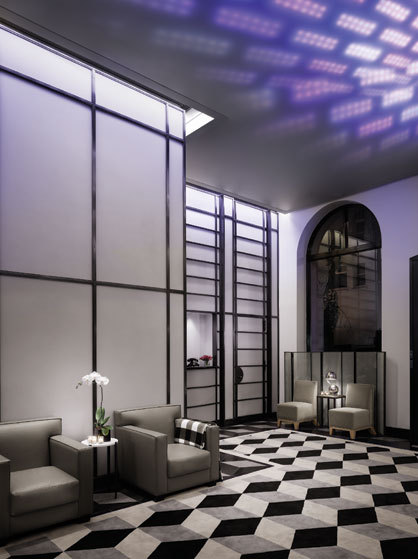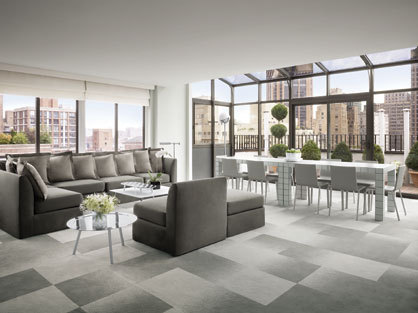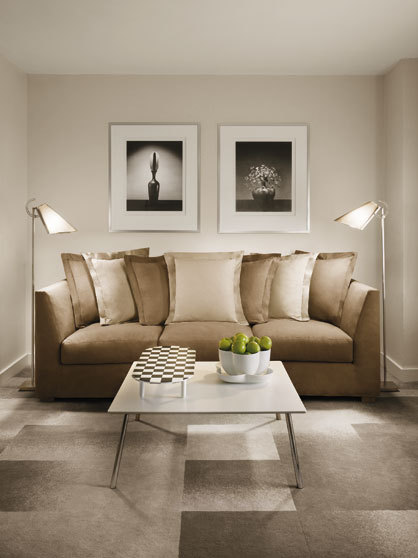Timeless doesn’t necessarily mean boring
Scritto da NoéMie Schwaller
Zürich, Svizzera
04.11.08
When in 1981 Steve Rubell and Ian Schrager hit on the idea of converting a New York flophouse into a luxury hotel, the world was still a very different place.
When in 1981 Steve Rubell and Ian Schrager hit on the idea of converting a New York flophouse into a luxury hotel, the world was still a very different place and top-class hotels were starchy, old-fashioned places.
Together with designer Andrée Putman they opened Morgans on Madison Avenue / 37th. Street in 1984. Andrée Putman had previously designed boutiques for Yves Saint Laurent and Thierry Mugler, but had never taken on a project of this size. At a stroke she revolutionised the interior design of the New York hotel scene with a modern, stylish but at the same time unpretentious look.
Morgans has now been re-interpreted and converted in a four-month renovation phase. The owners once more worked with the original designer in order to retain the concept of the «urban home» and to pay homage to the «home away from home», as they also like to call it, and to adapt the Morgans style to the future. The hope is to extend the hotel's appeal to a contemporary generation, too.
The renovation cost MHG (Morgans Hotel Group) around nine million dollars and covered the refurnishing of the lobby, the bedrooms and the penthouse. «The Living Room» has been equipped with a new high-tech business center. The bathrooms, the most characteristic feature of the hotel, have been upgraded but have retained their strong visual identity with its conspicuous black and white pattern. The Thirties are linked to the digital age in the form of outsize pixels. This stylish classical chessboard pattern was originally the result of financial pressure, in that the designer combined low-cost white tiles with black ones in consideration of the restricted budget.
The 113 bedrooms are furnished to provide a high level of comfort, but make a pleasantly unadorned impression. Fresh modern elegance has replaced the over-furnished traditional swank. The generously proportioned double penthouse is ultra-chic: here too the spirit of a jet-set Manhattan private apartment has been retained, but it has been given a playful touch in the form of a modular sofa, works of art and design objects by Bourroulec and Marcel Wanders, together with a lamp by Ms Putman. A stroll through the hotel also reveals other objects which clearly originate in the twenty-first century, such as an overhead LED screen by Trafik, a French graphics and design collective. It spans the entire ceiling of the entrance hall and plays across it like an enormous screen saver.
Since it was opened in 1984 the hotel's restaurant, «Asia de Cuba», has enjoyed an outstanding reputation. The room was created by star designer Philippe Starck and contains a nine-metre long, illuminated marble table which stretches the length of the dining area, a large photo light box showing a waterfall, and cosy lounge areas with open fireplaces. The original black and white photographs by Robert Mapplethorpe, which were commissioned in the Eighties, still decorate the walls today.
Situated at 237 Madison Avenue the hotel is within walking distance of Fifth Avenue, the business district and Times Square, in other words the ideal location for shopping, business and night life.







